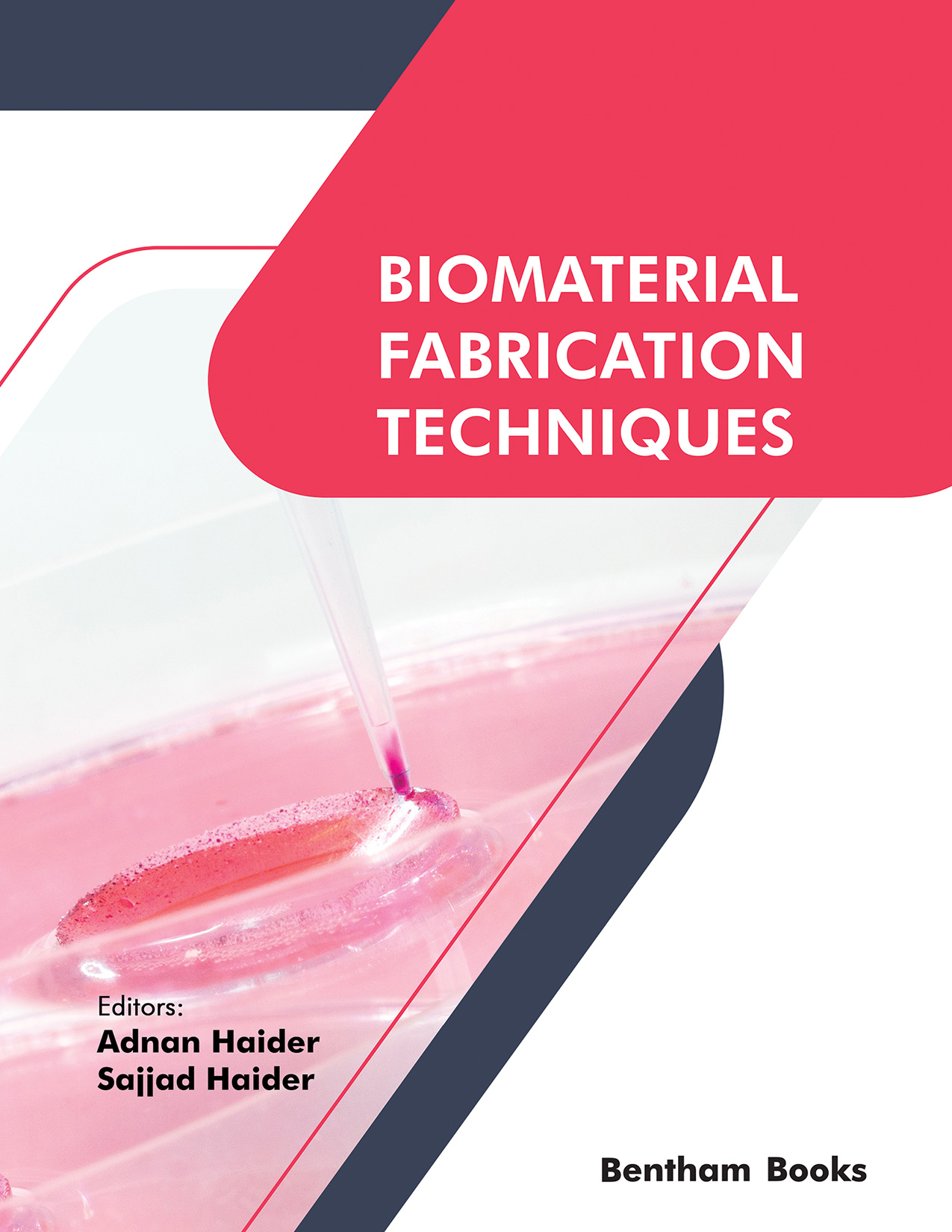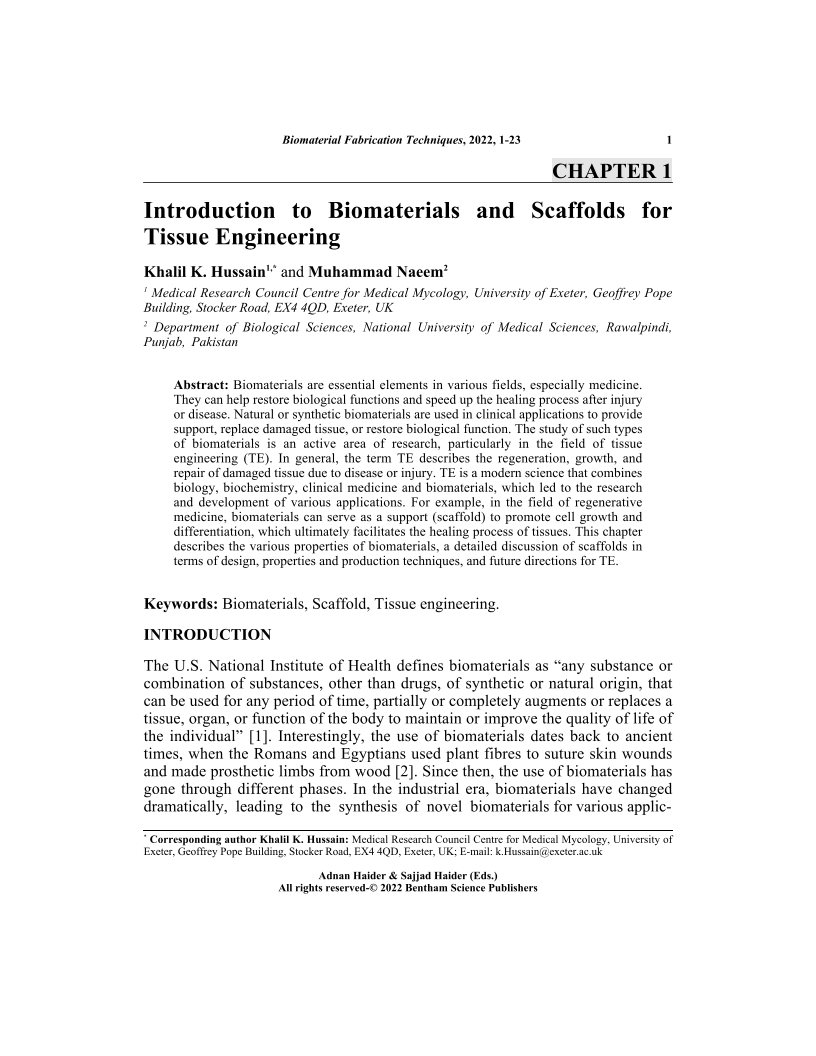Introduction to Biomaterials and Scaffolds for Tissue Engineering

- Authors: Khalil K. Hussain1, Muhammad Naeem2
-
View Affiliations Hide Affiliations1 Medical Research Council Centre for Medical Mycology, University of Exeter, Geoffrey PopeBuilding, Stocker Road, EX4 4QD, Exeter, UK 2 Department of Biological Sciences, National University of Medical Sciences, Rawalpindi, Punjab, Pakistan
- Source: Biomaterial Fabrication Techniques , pp 1-23
- Publication Date: November 2022
- Language: English
Introduction to Biomaterials and Scaffolds for Tissue Engineering, Page 1 of 1
< Previous page | Next page > /docserver/preview/fulltext/9789815050479/chap1-1.gif
Biomaterials are essential elements in various fields, especially medicine. They can help restore biological functions and speed up the healing process after injury or disease. Natural or synthetic biomaterials are used in clinical applications to provide support, replace damaged tissue, or restore biological function. The study of such types of biomaterials is an active area of research, particularly in the field of tissue engineering (TE). In general, the term TE describes the regeneration, growth, and repair of damaged tissue due to disease or injury. TE is a modern science that combines biology, biochemistry, clinical medicine and biomaterials, which led to the research and development of various applications. For example, in the field of regenerative medicine, biomaterials can serve as a support (scaffold) to promote cell growth and differentiation, which ultimately facilitates the healing process of tissues. This chapter describes the various properties of biomaterials, a detailed discussion of scaffolds in terms of design, properties and production techniques, and future directions for TE.
-
From This Site
/content/books/9789815050479.chap1dcterms_subject,pub_keyword-contentType:Journal -contentType:Figure -contentType:Table -contentType:SupplementaryData105

